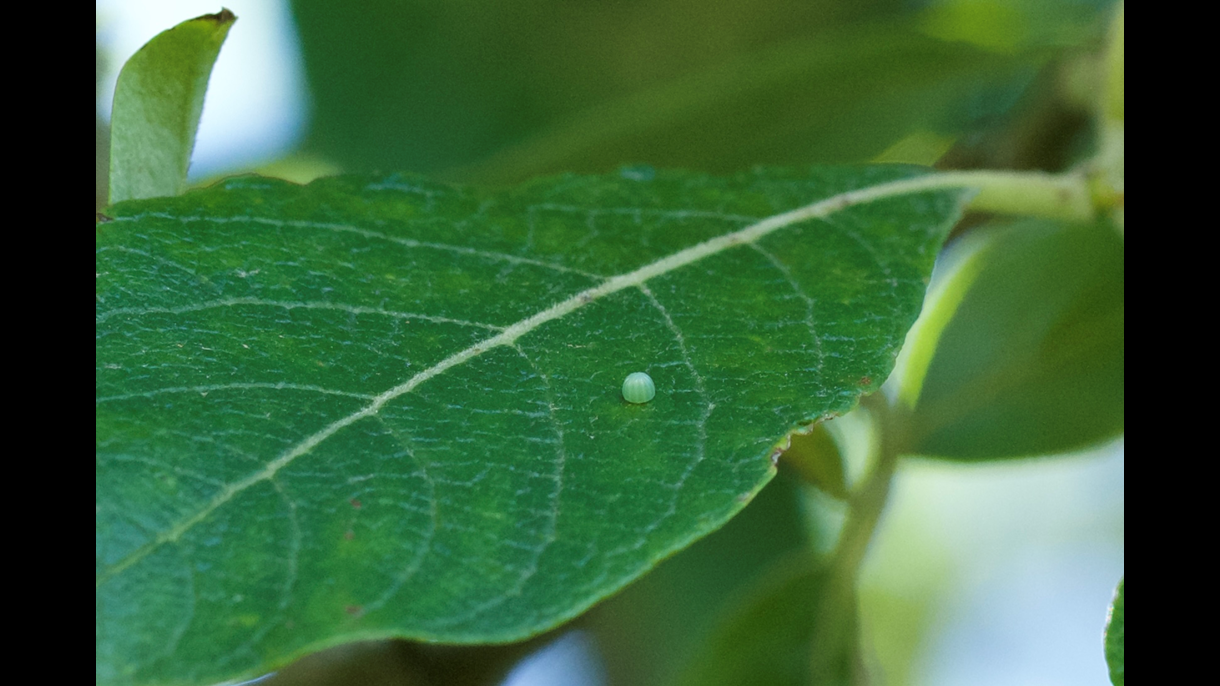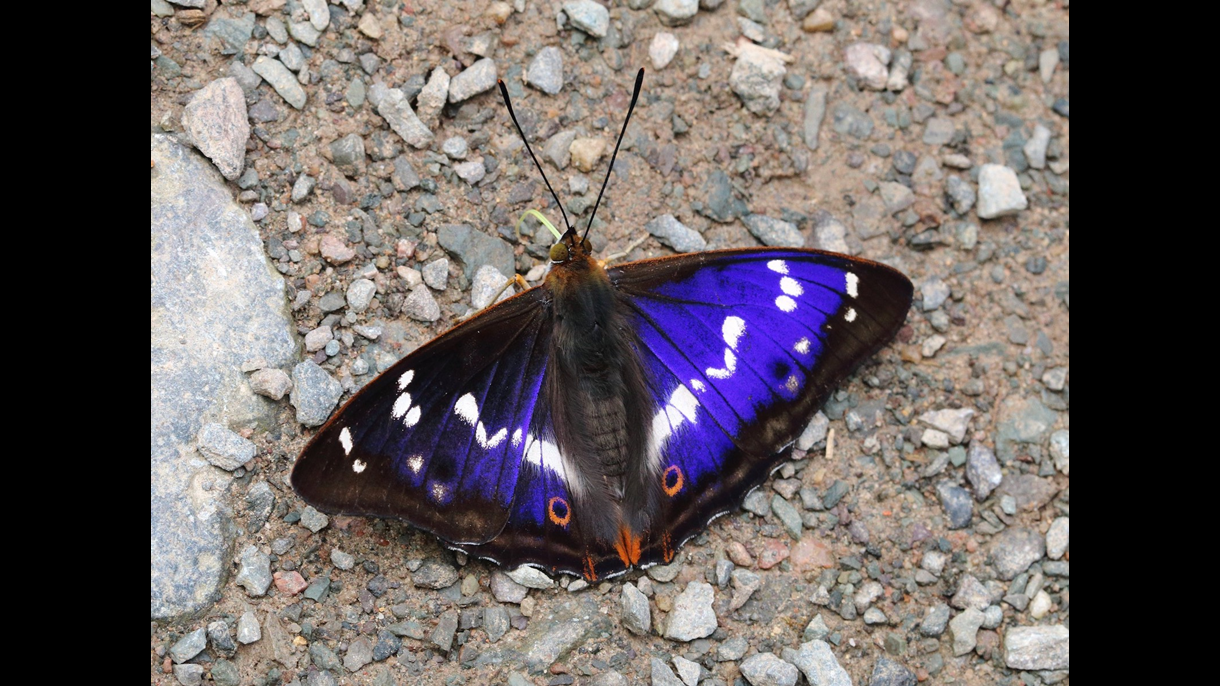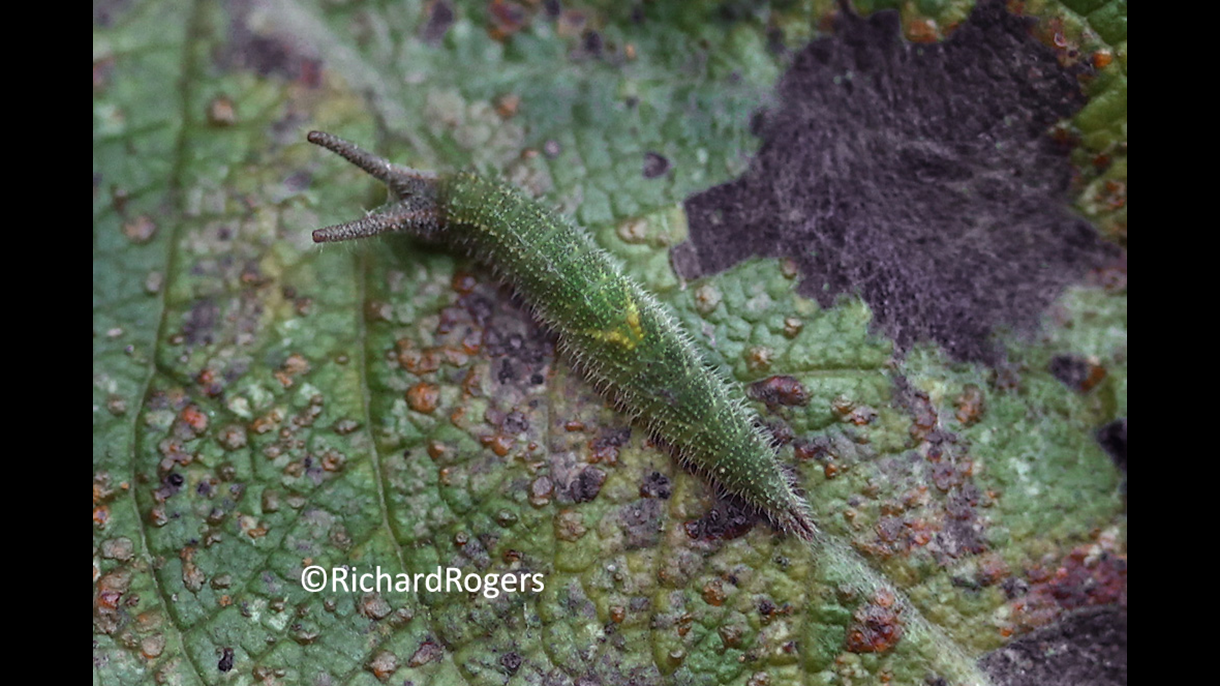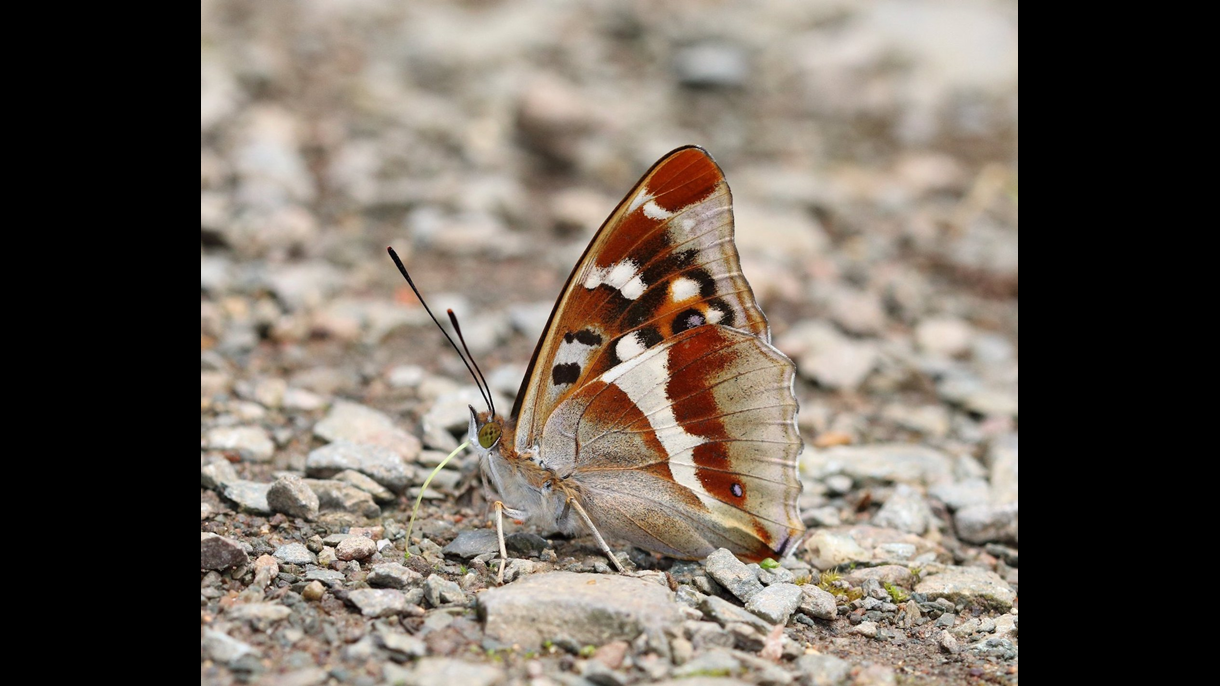Butterfly Conservation and the Purple Emperor/ White Admiral Projects
Derbyshire is hoping to create an imperial invasion in the coming years as the Purple Emperor butterfly (dubbed His Imperial Majesty) continues its march northwards into the county.
This large and magnificent butterfly has been getting ever closer by colonising woodland in adjoining counties and the first individuals were spotted in South Derbyshire in July 2024 (Bretby/ Aston-On-Trent).
Please see the current distribution map. (jpg, 84kb)
East Midlands Butterfly Conservation (EMBC) and South Derbyshire District Council (SDDC) teamed up with the support of the National Forest Company to spearhead a project to establish the species in Derbyshire and help its northward route.
Pictures from the launch day event in December 2023 are available here.
East Midlands Butterfly Conservation and SDDC funded the purchase of 550 two-year old Goat Willow plants (called ‘whips’), upon which the adults of this species lay their eggs as the first step on the life cycle of the next generation. There are dozens of varieties of Willow, also called Sallow -but it is known that the Purple Emperor prefers the broad-leaved Goat Willow (Salix Caprea), though eggs and larvae have been discovered on other varieties, notably Grey Willow (Salix Cincera) It is these types that have been purchased to encourage His Imperial Majesty’s steady advance north.
A number of local organisations and companies are pledging involvement by planting the Sallow whips at specific sites thought likely to be sought out by the Purple Emperor.
These include Forestry England, The National Trust at Calke Abbey, Staunton Harold & Foremark, the University of Derby, Derby College, Bretby Golf Club, Lubrizol, Toyota, St Modwen Homes, other local councils, Mimi’s Wood, Grangewood, Catton Park and other woodland sites.
Having multiple sites involved in the project will help create wildlife corridors between woodlands/ grasslands for butterflies and other creatures.
The Purple Emperor is primarily a woodland species, and it likes mature trees on and around which to display, although it has been seen in a wider range of habitats in recent years.
The male butterfly gravitates to high points in woods, so planting the willow whips close to mature trees is advisable.
It can take up to 5 years before the willow trees will be large enough for the female Purple Emperor to make use of them as an egg laying plant.
Planting advice has been provided by Matthew Oates, a well-known naturalist and volunteer for Butterfly Conservation. He has studied and written about the Purple Emperor. Long term, detailed studies of individual species are a huge help in any conservation effort.
Matthew says that the male butterfly likes a sheltered high spot, often around mature oaks, where he can look out for and fight off other males and see females approaching. Mating tends to occur around the middle of the day and then the female butterfly lays her eggs on willow/ sallow in the afternoon on leaves which are in the shade.
So ideally the whips should be planted in groups of 3 or 4 as a mixture in woodland rides on the eastern side of a wood, so the leaves catch the sun in the morning and are shaded in the afternoon.
Eggs are laid late July/early August, and the early larval stages are eating until early November; during this period growth is quite slow, reaching only around 10mm before hibernation, when they could fall prey to predators so they usually take up position by a bud, a twig junction or a cleft in the Sallows branch where they remain camouflaged. But as soon as the Sallow buds open in the spring, the larvae begin eating voraciously and quickly grow during April and May, often quadrupling in size. Pupae form over three weeks from late May to mid-June, with emergence of the adult butterflies taking a similar time – males usually before females.
Adults are on the wing from mid-June to early August and that is the key time to be looking out for them!
Would you like to learn more about butterflies and how to help with butterfly monitoring?
If so, please contact Ken ken@malaga.plus.com and he will be able to advise you on your nearest Survey route, how to learn about butterflies and put you in touch with other volunteers. General information about Butterfly monitoring is here: Recording and monitoring | Butterfly Conservation (butterfly-conservation.org)
Complete beginners are welcome!
This project was so successful in engaging people (and butterflies!) that it was extended in 2024 to offer local residents free goat willow trees as part of the SDDC Free Tree Scheme (hyperlink to www.southderbyshire.gov.uk/freetreescheme ) 100s of trees were given away in November and December and planted across the District.
Also in 2024, Butterfly Conservation extended their plans to the White Admiral Butterfly. Jointly with SDDC they funded the planting of 100s of wild honeysuckle plants in the same locations as the goat willows – at points on their regular butterfly survey routes. The honeysuckle is the food plant of the White Admiral caterpillar.
We’re open to ideas about wildlife projects which enable everyone to participate to make a difference – please contact us: rosliston@southderbyshire.gov.uk
If you’d like to make a start on recording the wildlife you see in your own garden to help monitor population numbers and different species, there are some other ideas here plus a link to Derbyshire Biological Records Centre:
Wildlife Watch in South Derbyshire | South Derbyshire District Council
Find out more about getting involved in environmental projects across the National Forest here:
https://www.nationalforest.org/get-involved/wildlife
More information on the Purple Emperor Butterfly can be found on the Butterfly Conservation website here Purple Emperor | Butterfly Conservation (butterfly-conservation.org)
Thank you to the Butterfly Conservation’s Gary Atkins and Ken Orpe for the above technical information.
We are delighted to report that this project was honoured with an International Green Apple Award for Environmental Best Practice in November 2024
Picture Gallery Credits:
Purple Emperor adult – c. Mark Searle
Purple Emperor larva Cotgrave Wood - c. Richard Rogers
Purple Emperor underside of wing – c. Mark Searle
Purple Emperor egg on sallow leaf – c. Ian Surman




